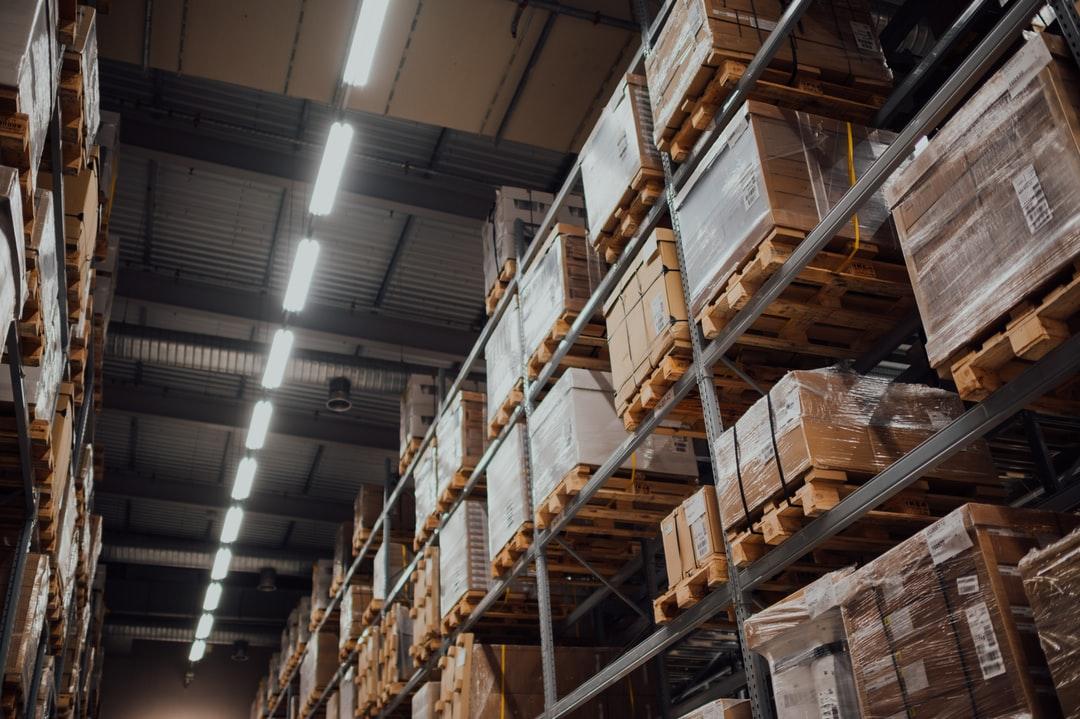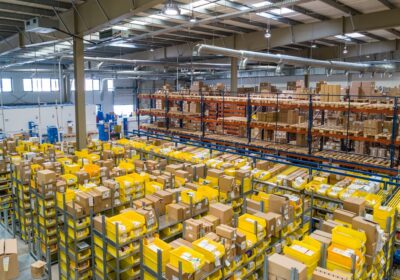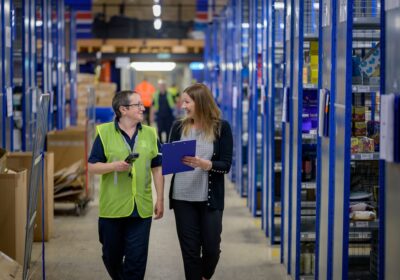What is 3PL logistics? 3PL stands for ‘third party logistics.’ These companies are fulfillment and logistics partners that assist businesses with storing inventory and shipping products to customers. In reality, 3PLs are invaluable to so many businesses, fulfilling a vital (but extremely complex) role.
This article covers how 3PL services work, the benefits of this partnership, and how to choose the right logistics partner.
What Does 3PL Mean in Logistics?
As mentioned above, third-party logistics, or 3PL, involves outsourcing key parts, or even the entire logistics operation, to an external provider. A 3PL partner serves as a bridge between your business and your customers. They handle core functions like:
- Warehousing: The process of storing physical goods in a dedicated facility before they’re sold or shipped. This space can include shelving, bins, temperature control, and security systems.
- Inventory Management: Tracking and controlling the stock of products a business has on hand. It ensures the right products are available at the right time and in the right quantity.
- Fulfillment: The complete process of getting a product from a warehouse shelf to a customer’s doorstep. It includes receiving orders, picking the correct items, packing them securely, and arranging for shipment.
This includes storing goods, managing stock levels, picking and packing customer orders, shipping, and even handling returns. These third-party companies can take the bulk of the effort and work off your plate. But, while the 3PL takes care of the logistics, the business retains control over customer experience, product orders, and invoicing. It’s a flexible solution that allows companies to scale without the hassle of managing logistics in-house.
3PLs aren’t the only logistics partner, either. There are 1PLs, 2PLs, and 4PLs, as well. We’ll cover how these solutions work to help you determine the best strategy for your needs.
1PL
With 1PL, the company handles everything in-house. They store their own goods and deliver them directly to customers. This approach is most common among small businesses with local operations. Unlike 3PL providers, which take over storage and shipping, 1PL companies manage their logistics entirely on their own. These companies have full control but limited scalability.
2PL
2PL is the first step toward outsourcing. These are providers who handle transportation and (possibly) storage, acting as basic logistics partners. They typically operate within the same country and offer more support than a 1PL setup, but less flexibility and customization than a 3PL. While 3PLs often provide integrated solutions, 2PLs focus mainly on moving and storing goods.
4PL
4PL takes things a step further than 3PL by managing your entire supply chain, from strategy and planning to selecting logistics providers. Unlike 3PLs, a 4PL doesn’t own trucks or warehouses; instead, it coordinates 3PLs on your behalf. Businesses that use 4PL services often seek a long-term partner to optimize and oversee complex logistics operations end-to-end. 4PL services are not cheap and typically work with large companies.
How 3PL Services Work
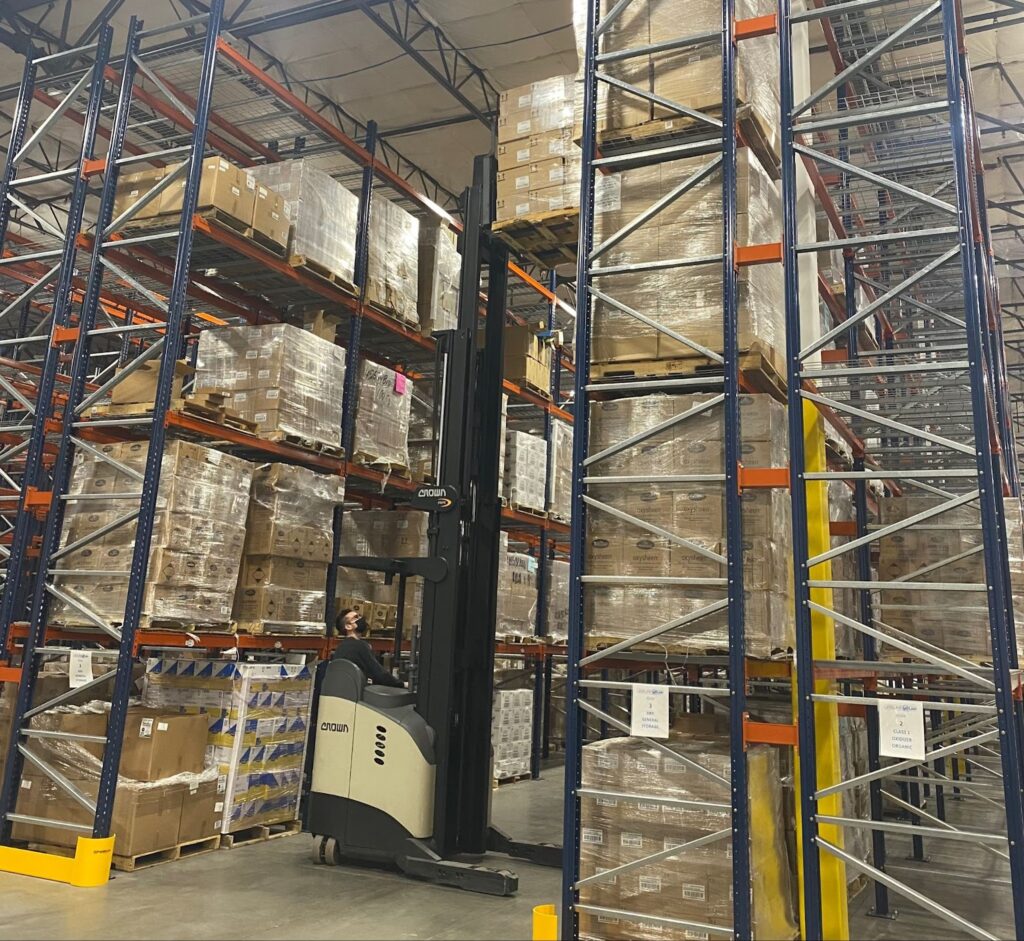
Not every 3PL service offers warehousing, inventory management, and fulfillment. Some handle only transportation management or storage.
A full-service, end-to-end fulfillment process will handle every aspect of your logistics. A comprehensive third-party logistics provider will streamline the entire order fulfillment process by managing storage, packing, and shipping on your behalf.
An end-to-end fulfillment system makes it easier for you to focus on growing your business, rather than managing overall logistics. The exact process will vary depending on the 3PL partner, but most providers follow a core workflow.
This is the typical step-by-step look at how end-to-end 3PL services work.
1. Inventory Is Sent to the 3PL Fulfillment Warehouse
You begin by sending your products to the 3PL’s fulfillment center. This might be directly from your manufacturer or your current storage facility. The 3PL then receives the goods and prepares them for storage.
2. SKUs Are Received and Organized
The 3PL checks your inventory and organizes it by SKU (stock-keeping unit) so it can be easily located and picked up later. The inventory is stored safely in the warehouse until customers place their orders.
3. Orders Are Transmitted to the 3PL
When a customer places an order through your e-commerce platform, the order details are sent to the 3PL. This can happen automatically via integration software or manually if needed. (Though the manual process is exhaustive and not recommended.)
4. Items Are Picked and Packed
Warehouse staff locate the items from your inventory (this is the “picking” step) and pack them securely for delivery. Depending on the 3PL, packaging can be customized to reflect your brand.
5. Orders Are Shipped to Customers
The packed order is handed off to a shipping carrier such as UPS, FedEx, DHL, or USPS. Your customer receives tracking information, and the order is delivered to their doorstep.
Not all 3PLs operate in the same manner, though. Some focus on specific types of warehousing and fulfillment designed to store and ship products that come with unique requirements. These needs often relate to compliance standards or maintaining product quality during transit.
For instance, temperature-sensitive items must be kept within strict temperature ranges. This type of logistics management, known as cold chain management, requires refrigerated warehouses and specialized transportation equipment. Some 3PL providers are equipped to handle goods classified as hazardous materials, too. These might include everyday products like batteries or perfumes, but they require extra care due to strict regulations. In many cases, the 3PL’s staff must hold specific certifications to legally and safely manage these items.
Then there are oversized or heavy products, like furniture, appliances, or large outdoor gear. Only a select group of 3PLs have the infrastructure and expertise to store, pick, and ship these items accurately without driving up your shipping costs.
Core Benefits of Partnering with a 3PL Provider
From potential cost savings to increased customer satisfaction, there are plenty of reasons to partner with a premier 3PL. These are the core benefits.
Faster, More Cost-Efficient Shipping
3PL warehouses are designed from the ground up to move your orders quickly and efficiently. All of this means your orders get out the door faster and with fewer mistakes.
- Fast-moving products are placed in easy-to-reach spots for quicker picking.
- Picking zones are laid out to cut down on time spent walking around.
- Packing stations are fully stocked with the right materials for the job.
- Special areas are set aside for services like kitting or branded packaging.
Reduced Overhead and Labor Costs
Partnering with a 3PL is a smart financial decision that can significantly reduce overhead. Here’s how 3PL services directly impact your bottom line.
- Eliminate Warehouse Startup Costs: You can avoid massive upfront investments in infrastructure and labor, including warehouse leases, racking systems, equipment, drivers, and specialized labor.
- Reduce Shipping Rates: You may benefit from the 3PL’s deeply negotiated shipping discounts and smarter packaging optimization. (Think: carrier volume discounts with UPS or DHL and dimensional weight optimization to avoid oversized surcharges.)
Eliminate Specialized Labor Costs: Avoid the time, cost, and turnover associated with hiring and training an internal fulfillment team, including saving on HR and liability expenses.
Greater Flexibility During Seasonal Surges
With a 3PL, you only pay for the space and services you use, so there’s no need to rent a full warehouse or staff during slow periods. Alternatively, you have the freedom to run flash sales or promotions without straining your logistics team. Your partner becomes an automatic built-in buffer against unexpected demand spikes that could otherwise result in fulfillment delays or errors.
Expertise in Compliance and Logistics Technology
The Small Business Index (SBI) survey found that 51% of small businesses say navigating regulatory compliance requirements negatively impacts their bottom line. Anytime your business can safely offset compliance requirements, you save revenue. Outsourcing to a 3PL helps shield you from the everyday risks that come with running a supply chain. Here’s how:
- Marketplace Compliance: Each online marketplace, like Amazon, has strict rules for packaging and shipping. A 3PL with marketplace experience guarantees your orders meet these changing, complex requirements, helping you avoid delays or account penalties.
- Regulatory Compliance Expertise: 3PLs employ specialists who stay on top of evolving laws and regulations — like the Department of Transportation (DOT), Food and Drug Administration (FDA), Occupational Safety and Health Administration (OSHA), and international trade policies — so you avoid costly fines, shipment delays, and compliance errors.
- Contingency Planning: Multiple carrier relationships and distributed warehouse networks mean 3PLs are equipped to keep your operations running even when unexpected disruptions hit.
- Quality Assurance Systems: Leading 3PLs follow the International Organization for Standardization (ISO) standards and conduct regular audits to reduce errors, minimize inventory loss, and ensure consistent performance.
What Types of Businesses Use 3PL Services?
3PLs may handle logistics services behind the scenes, but they’re the backbone of many successful businesses, from small e-commerce shops to Fortune 500 brands. The right 3PL is flexible enough to grow with you. The ideal partner offers scalable support and a wide range of services to help you succeed at every stage of your business.
The following types of businesses commonly use 3PL services:
- DTC e-commerce brands: Online sellers partner with 3PLs to simplify order fulfillment, improve shipping times, and focus more on marketing and product development.
- Subscription box companies: Recurring shipments and a need for custom kitting or packaging make relying on 3PLs a great way to ensure accuracy and timeliness.
- Wholesale and B2B operations: Selling to retailers like REI or Walmart comes with strict compliance requirements. 3PLs with B2B experience help manage large shipments and avoid chargebacks.
- Crowdfunded and startup product companies: When a product goes viral, startups quickly outgrow their own, small warehouse space. 3PLs step in with scalable infrastructure and fast onboarding to keep momentum going.
These businesses operate in various industries, including apparel, general merchandise, electronics, beauty, and more. A real-life example is Wondery Outdoors. This women’s outdoor brand scaled its business by outsourcing logistics to Relentless Fulfillment, and the results speak for themselves:
- 281% increase in B2B orders
- 170% increase in DTC items shipped
- 16,000% increase in SKUs managed
Thanks to personalized support, fast turnaround, and seamless operations, Wondery was able to close its internal warehouse and focus entirely on growth.
How to Choose the Right 3PL Logistics Provider
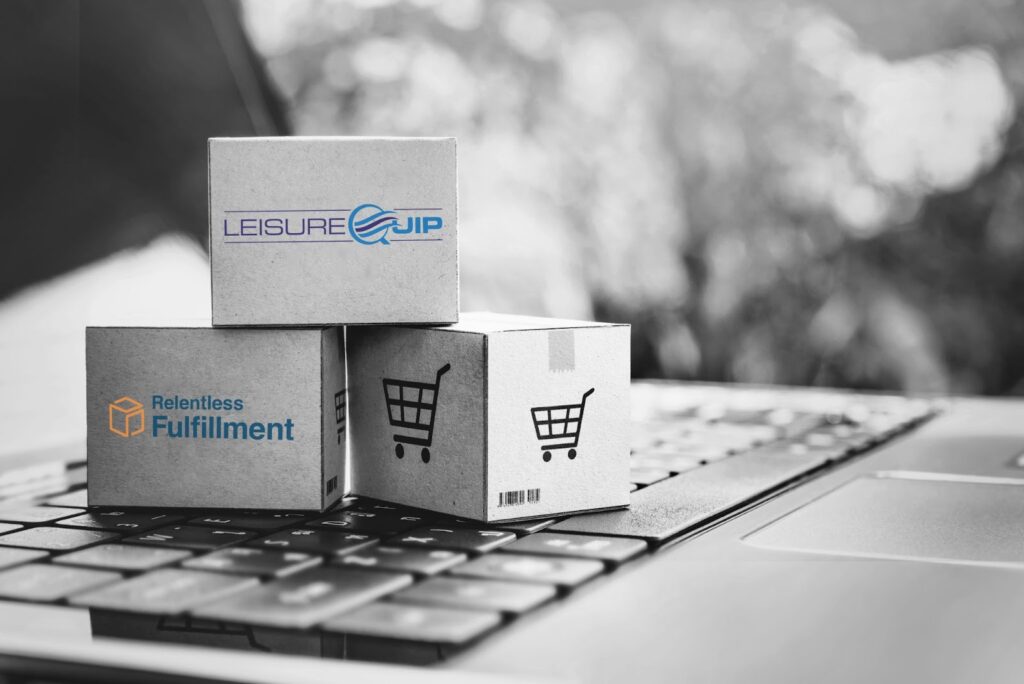
When choosing a 3PL partner, consider location, technology, scalability, and customer service. Below are the questions to ask and red flags to look out for.
Questions to Ask
Your customers’ trust and the future of your business is on the line. You must use the vetting process effectively. Ask these questions to determine which 3PL companies just aren’t a good fit.
- How long have you been in business?
- How have you helped companies in [your industry] succeed, and do you have case studies I can review?
- What makes you different from the other logistics service providers out there?
- Can you tell me about the parcel and freight carriers that you work with?
- What freight equipment types do your carriers have?
- What kind of freight services do you offer your customers?
- What parcel services does your 3PL company offer?
- Do you offer reverse logistics (returns) services?
- What types of products does the 3PL specialize in?
- Can the 3PL provide kitting, customization, light assembly, or box inserts?
- What is your shrinkage allowance?
- Is there a minimum monthly order volume?
- What percentage of my orders can reach customers in two days or less?
- What technology do you use to manage fulfillment and shipping?
- Do you offer a client dashboard with real-time reporting and access?
- Can you integrate with my ERP, e-commerce platforms, or other systems?
- Do you provide an API or other technical support?
- Is your system customizable for my business needs?
- What’s your onboarding process like?
- Will I have a dedicated account manager or success contact?
- How can I get support if something goes wrong? If so, what is your response time on issues?
- What are your order fulfillment, shipping, and storage rates?
- What kind of contract do you require? Are there long-term commitments?
- What physical and digital security measures do you have in place?
- Is your facility climate-controlled?
- How do you prevent and handle damaged or lost inventory?
- How do you handle returns, including refund speed and restocking?
- Do you offer customizable notifications and KPIs tracking?
6 Red Flags to Avoid
Logistics and supply chain management are complicated processes, and you need a partner you can trust. There are red flags to look out for and avoid.
1. Inventory Mismatches
A reliable 3PL should be able to manage your inventory accurately and in real-time. If a logistics partner frequently has inventory discrepancies, leading to stockouts or excess stock, it’s a sign of poor forecasting and internal mismanagement. These errors can cost you money on both ends: unsold products eat up storage fees, and stockouts frustrate customers. A partner who struggles with counting is a dealbreaker.
2. Transportation Delays and Mis-shipments
Accidents do happen, and no partner is perfect, but frequent late deliveries and incorrect shipments are likely from a lack of organization or inadequate labor planning. These issues create a domino effect that disrupts your supply chain.
Timely delivery isn’t just a nice-to-have — it’s an expectation. When a logistics partner routinely misses shipping deadlines, your brand’s reputation is at risk. Even one or two delayed shipments can lead to negative reviews and lost repeat customers. Worse, repeated issues could indicate deep operational inefficiencies.
3. Slow Shipments
Modern consumers expect fast shipping; in fact, 80% expect same-day delivery. If your 3PL can’t meet demand, you risk losing your competitive edge. Delays may indicate serious underlying issues, such as:
- staffing shortages
- outdated systems
- a warehouse that is growing faster than it can manage
Before you sign, review the 3PL’s Service Level Agreement (SLA) and check whether they stand behind their delivery promises.
4. Poor Customer Service
If a logistics provider doesn’t prioritize service before you sign a contract, don’t expect them to care more once you’re locked in. Look for signs like slow responses to quote requests or a lack of flexibility when discussing your needs. A customer-first mindset is essential in a logistics partner. You want someone who makes your life easier, not more complicated.
5. Complex Fee Structures
While fulfillment pricing can be complex, it should never be confusing. Watch out for vague billing, hidden fees, or unclear charges for common services like labeling or kitting. A trustworthy 3PL will be upfront about all costs, so if your invoices are loaded with cryptic line items, you’re likely being overcharged.
6. Poor Technology
Your 3PL’s software is how you’ll interact with your fulfillment process daily. It should provide real-time inventory updates, tracking numbers, and shipping data, and be accessible across devices. If the platform is hard to use or severely outdated, it will only slow you down. Choose a tech-savvy partner whose tools make your logistics more efficient, not more frustrating.
Why Choose Relentless Fulfillment as Your 3PL Logistics Partner?
We don’t just store and ship your products. We become an extension of your team. Your goals are our goals, and your success is our mission. We use personalized service, cutting-edge technology, and unmatched accuracy to elevate your entire logistics operation.
Do you sell directly to consumers, distribute to retailers, or need support for Amazon FBA? Relentless Fulfillment does it all. Our services include:
- B2B & B2C Fulfillment
- Retail Distribution
- FBA Prep Services
- Kitting & Custom Packaging
- Reverse Logistics (Returns)
Tech-enabled Solutions for Faster, Smarter Shipping
With our powerful client portal, you’re never in the dark. Our system provides you with secure, real-time access to your most critical sales, inventory, and order data. Whether you’re managing inventory levels, reviewing fulfillment stats, or downloading custom reports, you can do it from any internet-connected device — anytime, anywhere. You’ll always know where your products are and how your fulfillment is performing.
We also proudly offer service-level agreements (SLAs) of 24 hours for all direct-to-consumer (DTC) orders and 48 hours for B2B orders and returns processing. With fulfillment times like these, you can keep customers happy and your operations moving efficiently.
Custom Packaging, Kitting, and Value-Added Services
We know that the details matter, especially when it comes to your customer’s experience. Whether you’re aiming for a premium unboxing moment or branded packaging that leaves an impression, we offer customized packaging and shipping solutions to help your brand stand out. We work with you to deliver the fulfillment your customers deserve.
Transparent Pricing
We believe in transparency, not surprises. From day one, you’ll have instant access to all the data related to your account, as well as a direct line to our logistics experts. We operate with honesty and integrity at every step of the process, because trust is essential in any partnership.
Dedicated Support and Fulfillment Built to Scale With You
Onboarding shouldn’t be a hassle. Our system natively supports integrations with over 100 leading e-commerce platforms and online marketplaces, making it quick and easy to connect your sales channels and get started. Whether you use Shopify, Amazon, WooCommerce, or something else, we’ve got you covered.
Logistics can be complex, but getting support shouldn’t be. That’s why every client at Relentless Fulfillment is paired with a dedicated success manager. You’ll never be stuck waiting for an impersonal support ticket to be resolved. Instead, you’ll have instant access to a real human who understands your business, plus a responsive team available via live chat.
Ultimately, we’re proud of our fulfillment performance, and we have the numbers to back it up with a 99.9% on-time delivery rate and an error rate of just 0.1%. Fewer mistakes mean happier customers, better reviews, and less time spent fixing problems.
Get Started With Relentless Fulfillment Today
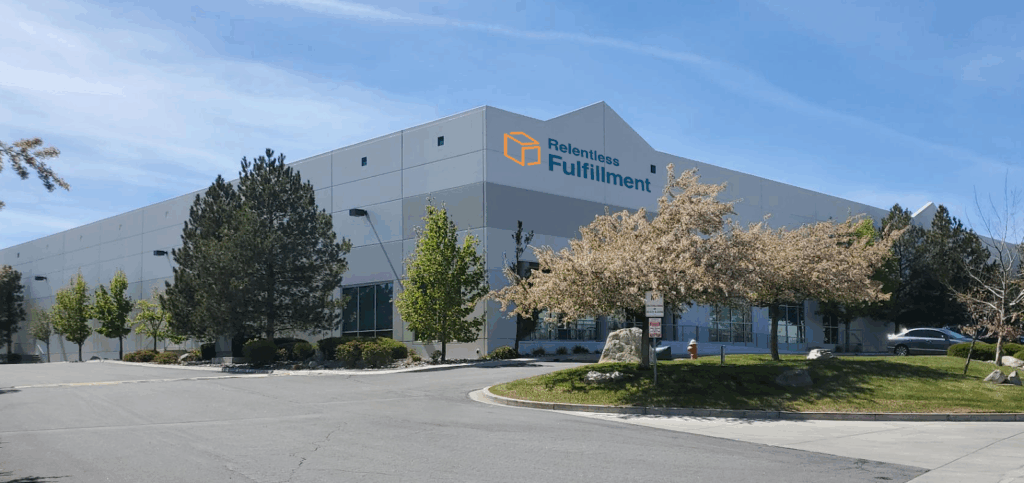
So, what is 3PL logistics? It’s more than just warehousing and shipping; it’s a smarter, more flexible way to manage your entire fulfillment process. With the right partner, you can reduce overhead and focus on what matters: growing your business.
At Relentless Fulfillment, we’re proud to serve as a seamless extension of your team. With fast SLAs, dedicated support, and full visibility into your data, we’re here to help you scale confidently and fulfill DTC, B2B, or FBA orders.Ready to streamline your logistics? Let’s talk. Contact us today to get a custom fulfillment quote.

